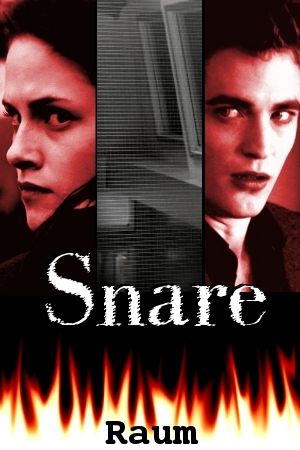Today's Writing Lab is brought to you by the awesome Nayarit! She's contributing every month to the Writing Lab (woot!). The subject for today's discussion is:
Creative use of Timelines in Writing (by Nayarit)
--------------------------------------
Well, it was the layout to the story that gave me the idea for this week’s post. It’s one of the few stories where the timeline isn’t just a foundation to the writing, but it becomes an element of the plot. Because the story is told in journal entries, in chronological order, engaging a reader, and allowing them to live the moments through time.
In the post I wrote about Multiple POV’s in narrative, I used Audrey Niffenegger’s The Time Traveler’s Wife as an example. And I’m going to use it again, only this time we’ll be discussing creative use of timelines in writing.
When a writer first sets out to write their story, they have an idea—a brainstorm—that they will build upon. The first step to that is outlining, whether it’s done by bullets, graphs, notes, summaries, charts, or even in the author’s head, a mapping-out process begins. That’s the writing timeline.
The timeline to a story is the events that take place within the plot. Now most timelines to stories will only serve the purpose of a foundation to the writing, a way of keeping events and plot in order. And there’s nothing wrong with that. Some stories have a timeline of three days. Some three hundred years. And it’s the timeline’s job to keep track of all of that.
But there are other instances in writing where the timeline’s job evolves, and it’s no longer behind the scenes. That’s what I call creative use of the timeline. It’s almost as if the timeline becomes a character in the story itself, because it’s used in a way that without it the story wouldn’t have the same impact.
And here we’re going to talk about the four ways to creatively use a timeline.
With the example of EAC: The Journals of Edward Cullen, we have a timeline that is forefront and chronological. With The Time Traveler’s Wife, we have a timeline that is forefront and warped, it jumps from points in the past, to the present, and even to the future. Now these are two examples on the complete opposite ends of the spectrum of using a timeline creatively in writing. There are other tools of using a timeline creatively in writing that include flashbacks and the switching of tense in the narrative.
By using a timeline creatively a writer is able to capture a new and unique way of storytelling, often enhancing mystery and intrigue and keeping readers engrossed in the story.
So let’s jump right into the thick of it!
Get started
The first thing, regardless of how you’re going to use your timeline, is to create it. It is, after all, a foundation in any writing. Each writer attacks the foundation of their writing in many different ways. Use the one that best works for you. If you’re a visual writer, map it out! Chart it! If you’re and “in your head writer” then imagine all the scenes, how they’d come together in order to tell the plot of the story, each event and when it occurs. If notes work best for you, do it that way! The key is to do what works best for you in writing. Always.
Choose which creative tool will work best
Now that you’ve mapped out your story, it’s time to decide how you want to use your creative timeline. I’ve narrowed it down to four possible ways: Chronological, Warped, Flashbacks, and Tense Shifts.
We’ll get into each of those tools separately. But I thought it would be best to go over some key rules to each tool first.
--Always be clear on the shift
No matter which tool you use, whenever you’re changing time in a story, you want to make that very clear to the reader. This can be achieved many ways. Labeling the shift with the time: February, 10, 1987. Being sure to use italics when employing a flashback. Even beginning a new paragraph when switching tense.
--Make sure the choice to use a creative timeline enhances the story, and doesn’t detract from it
There are hundreds of different ways to tell a story. And when choosing to play around with a creative timeline, it should be because it can bring a new element to the story. It becomes a new facet, like a character, something that is welcomed with the readers. Something to be enjoyed. If it leaves readers confused or aggravated, then it might be best to leave the timeline in its foundation where it started, because it should never detract from the plot or voice of a story, otherwise it’s not serving its purpose.
Chronological
This fun tool can be perfect for enhancing stories like our above example, EAC: The Journal of Edward Cullen, or stories of intense action. In stories where a the writer accounts a life, like in journal entries or even autobiographies, chronological creative timelines help the reader feel as if they themselves were there, living the life as it happened, with the writer. And in stories of intense action, it serves as a reminder of just how intense that action could be.
Friday, June 12th 20:00.
The weathered detective stood next to his desk, packing up for the night, when the clerk from in front told him he had a call. He looked at his watch and figured he still had enough time, as he picked up his phone and yelled to the clerk to put the call through.
“Mary Cunningham is going to go to work tomorrow night, “ the raspy, masked voice began, “and it’s up to you if she and more than thirty other people survive.” The officer dove for his pencil and began writing down everything: the time of the call, the background noises on the phone, the pitch, the tone, any accent, anything he could think of. He opened his mouth to ask a question and keep the caller on the line but the caller cut in, “You’ve got twenty-four hours, Detective Reilly.”
The dial tone blazed in the Detective Reilly’s ears.
Friday, June 12th 20:30.
The entire squad was crapped into the office looking at the board. There were six Mary Cunningham’s in the city. And there was now less than twenty-four hours to find the right one.
Every minute of the detective’s life from that point on is crucial. The writer will want to annotate every hour that passes, because it brings the readers one page closer to the climax. This tool is the easiest to master because it sticks closest to its founding version. And by keeping the chronological timeline forefront it serves to help the readers countdown with the officer, building the suspense of the writing.
Warped
Like with the example of The Time Traveler’s Wife, a warped timeline jumps around quite a bit. A story that employs a creative warped timeline uses it to keep mystery at the forefront of a readers mind. By giving the readers elements of the past, the present, and the future to piece together the entire arc of the plot becomes a puzzle that the reader must solve. It’s one of the most inventive ways of involving a reader in a story. It’s not just for time-traveling stories either, though those logically would make the most sense. Any mystery can benefit from the tool.
June 12th, 2005.
The weathered detective stood next to his desk, packing up for the night, when the clerk from in front told him he had a call. He looked at his watch and figured he still had enough time, as he picked up his phone and yelled to the clerk to put the call through.
“When are you coming home, “ his wife asked on the other line. His deep sigh was answer enough.
“We haven’t seen you in three days. It’s getting ridiculous. Noah, come home.”
“I’m on my way.”
Detective Noah Reilly put the phone back as he pushed the files into his desk, promising that he wouldn’t take the file home with him. The last thing he saw before slamming the drawer closed was her face.
January 2nd, 1993.
“Jenny, come inside it’s time to eat.”
A blonde little girl waved her mom off from across the street where she was jumping rope with her best friend, their laughs and hair bouncing in the air. Jenny’s pink sneakers scraped against the concrete on each of her turns.
“Jennifer!”
Jenny looked back to her friend with a pout. Her friend knew just as well as Jenny did what it meant when a mother used that tone and her full given name. With a shrug, Jenny waved goodbye to her friend as she began to run across the street. She was so caught up in saying goodbye to her friend that she didn’t see the van come barreling down the street, directly at her, with the sliding door open.
September 29th, 2001.
Noah looked at his wife. Her face was covered in sweat and exhaustion, but a serene smile firmly in place. She was holding his daughter, their daughter. And he felt his heart swell, even if it was bittersweet that her namesake couldn’t be there.
June 9th, 2005.
Noah hated waking up first thing in the morning to a call of his presence being requested at the scene of a crime. But for him it was far worse this time. A discovery of bones. An a pair of pink sneakers. Ones that looked entirely too familiar.
December 25th, 1992.
“I love them!” Jenny said as she flew into her brother’s arms. Noah smiled. It had taken a week’s worth of work, but he was finally able to buy his sister those pink sneakers she’d been asking for for months.
Warped is one of the hardest tools in creative timelines. It requires having a firm view of the entire plot arc, even a mapping out of the events in chronological order. Once the events are understood as they fall, then the process of jumbling them up, dispersing the puzzle pieces, becomes easier. Just remember that even though you’ve mixed the puzzle up, it should always fit back to create that original picture. And no matter where you choose to end in a warped timeline, the puzzle should be complete. Don’t leave plot elements hanging.
When working with a warped creative timeline, a writer has the ability to keep the intrigue to a story fresh, and get the readers to become a part of the action themselves.
Flashbacks
Unlike Chronological and Warped, Flashbacks don’t require an obvious annotation of time. The most common way that writers distinguish between this change in time is by having present day in regular font and the flashback in italics.
The benefit of Flashbacks is that it takes a reader into the action as if they were there, keeping every element of the effects of a present timeline available in the past, without directly halting the events and action of the present.
With Flashbacks, as opposed to Warped and Chronological, the reason for using the tool can be more character oriented, instead of plot. Flashbacks can be used to showcase reasoning to a specific behavior of a character; or a memory of a time in their lives that was impacting. Flashbacks serve to round out the mood and tone of a story and its characters.
Flashbacks are the perfect tool in the constant battle of showing a reader vs. telling them. By employing flashbacks you can bring an event, action, and dialog to the forefront of the story instead of having a character recap the event with a couple sentences.
Let’s use the following as an example:
You have a character that has anger management issues, and want to showcase the reason for this in your writing.
Without Flashbacks:
When I was ten my dad used to hit me. It used to make me so mad because I couldn’t do anything about it. I couldn’t fight back. And it built and built inside of me until it boiled over.
With Flashbacks:
When I was ten my dad used to hit me.
“What are you doing,” he asked, towering over me, kicking my toys to the side. It was late at night and he just got home. He always got home late at night, and he always smelled nasty, like smoke and beer.
“I was just playing.” Before I was able to look at him, he dragged me up by my shirt, the seam choking me as he used it to fling me across the room. My elbow slammed into the wall and my foot was twisted under me. It hurt so badly. I tried crawling up but he came over and kicked me once in my stomach and I doubled over.
“What time does your mom put you to sleep?”
“I dooon—”
“Aren’t you supposed to be sleeping?”
Tears built in my eyes at his voice and the pain in my chest. “Yeah.”
“Then get your ass in bed!”
When I wasn’t fast enough he kicked me again, sending me across the floor and my teeth biting into my lip. Blood filled my mouth, and the swallowed tears tried to wash it away.. I hurried up and crawled into the bed, just in time to hear him mutter “stupid kid” as he turned the light off and left.
In between the cold sheets and dead night, I cried and screamed and punched into the pillow.
He always did that. And I didn’t do anything wrong.
When choosing to use Flashbacks as a tool to creative timelines you’re able to enhance emotions, motivations, and events in a story in a vivid way that captures readers, more than if you hadn’t employed Flashbacks.
Tense Shifts
Like with Flashbacks, Tense Shifts doesn’t require annotation of time. And unlike with Flashbacks it doesn’t require italics. In some cases, it doesn’t even require starting a new paragraph. Tense Shifts occur commonly in all writing; if one sentence wishes to compare a behavior of the present to the past, that can happen within an entirely present paragraph.
But for the creative timeline I’m discussing, it would require a new paragraph as the shifts are used as a tool to change a large lump of time.
Here is an example from my writing:
And so one day, I gave in; I didn't use my beauty to get what I wanted. I just laid my cards out for him to see.
I had gone up to him while he studied in the school library.
"Okay, I'm superficial. I don't have anything going for me other than a gorgeous rack and set of lick-worthy legs. But what the hell do you expect, Marie god damn Curie?" And he had laughed; it was genuine and it was music to my ears. I hadn't even seen him laugh with his friend Jasper back then; he was always brooding.
"Your face isn't too bad either, Tanya."
"Right, well, I didn't want to sound conceited." And he had laughed even more that his green eyes actually held a bit of light in them. I gasped at how utterly beautiful happiness made him.
"I don't know how anybody could ever think that of you." There was an actual playfulness to his words.
"Nor I, Edward." And his lips curved into a delicious smirk. "May I sit?" I motioned to the empty chair at the small table he was studying at.
Shifting tense around, from present, to past, to past perfect and anywhere in between, is similar to Flashbacks in that it can enhance characterizations, but it can also serve to give life to a story. To place the action, even past action, in front. And when action shifts to the present it takes the reader along with them. But also, like with Flashbacks, Tense Shifts don’t have to detract from the original action and events in a story, but serve to round it out and add emotion, dialog, characterization, and even plot all while maintaining fluidity.
Whether you choose to keep the timeline of a story behind the scenes or in the forefront, it’s an essential element of writing. And when you add a little creativity you’re able to use your timeline in ways that breathe life into your writing, for both you and your readers. Enhancing anything from plot to characterization to emotions to mystery to suspense. Just like time, the options are infinite.
--------------------------
Thank you, Nayarit!
And now, feel free to leave your comment. You're very welcome to check Naya's stories!









































